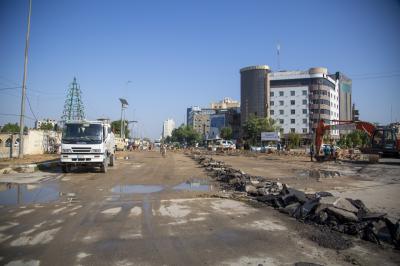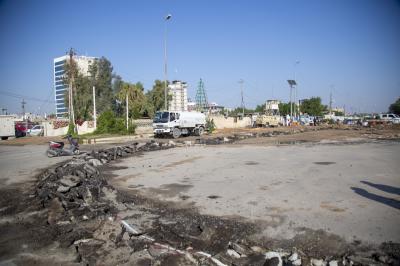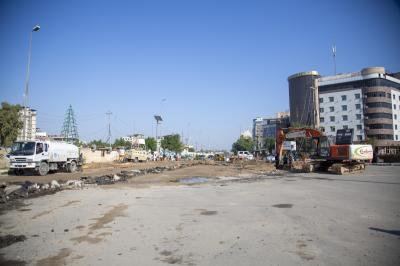The staffs of the Karbala Municipal Directorate started, in coordination with the Department of Engineering Maintenance and Construction at the al-Abbas's (p) holy shrine, implementing the first works of the project to develop and rehabilitate the entrance to Baghdad Gate, which leads to the shrines of Imam al-Hussayn and his brother Abu al-Fadl al-Abbas (peace be upon them both), after approval of its plan, which was developed by a specialized team from Karbala University.
According to the official of the Construction Division in the Engineering Maintenance and Construction Department, Engineer Mohammad Mustafa al-Taweel: “After the cadres of our department completed the initial stages of implementing the design, which included removing all the checkpoints and caravans belonging to the security forces, and moving them to an alternative place. In addition to leveling the ground and other works that facilitate the implementation of these works."
He added: “It is hoped that this vital and important entrance will be [after the completion of these works] a model entrance in an aesthetic way befitting it, as it is the only entrance for visitors coming from the capital, Baghdad. A number of matters will be taken into consideration, the most important of which is expanding the road, removing security barriers, and keeping only human barriers, with other aesthetic additions that preserve the architectural fabric of the city in addition to a large central yard that contributes to the flow of movement of visitors and vehicles.”
It is noteworthy that the cadres of the al-Abbas's (p) Holy Shrine, in cooperation with the cadres of the Karbala municipality's directorate and the supporting authorities from the governorate departments, began a long time ago to implement many projects aimed at serving the visitors, in the forefront of which was the rehabilitation and development of the streets leading to the Old City and its streets, in a way that contributes to reducing visitors' momentum for an easier and smoother movement of visitors.








